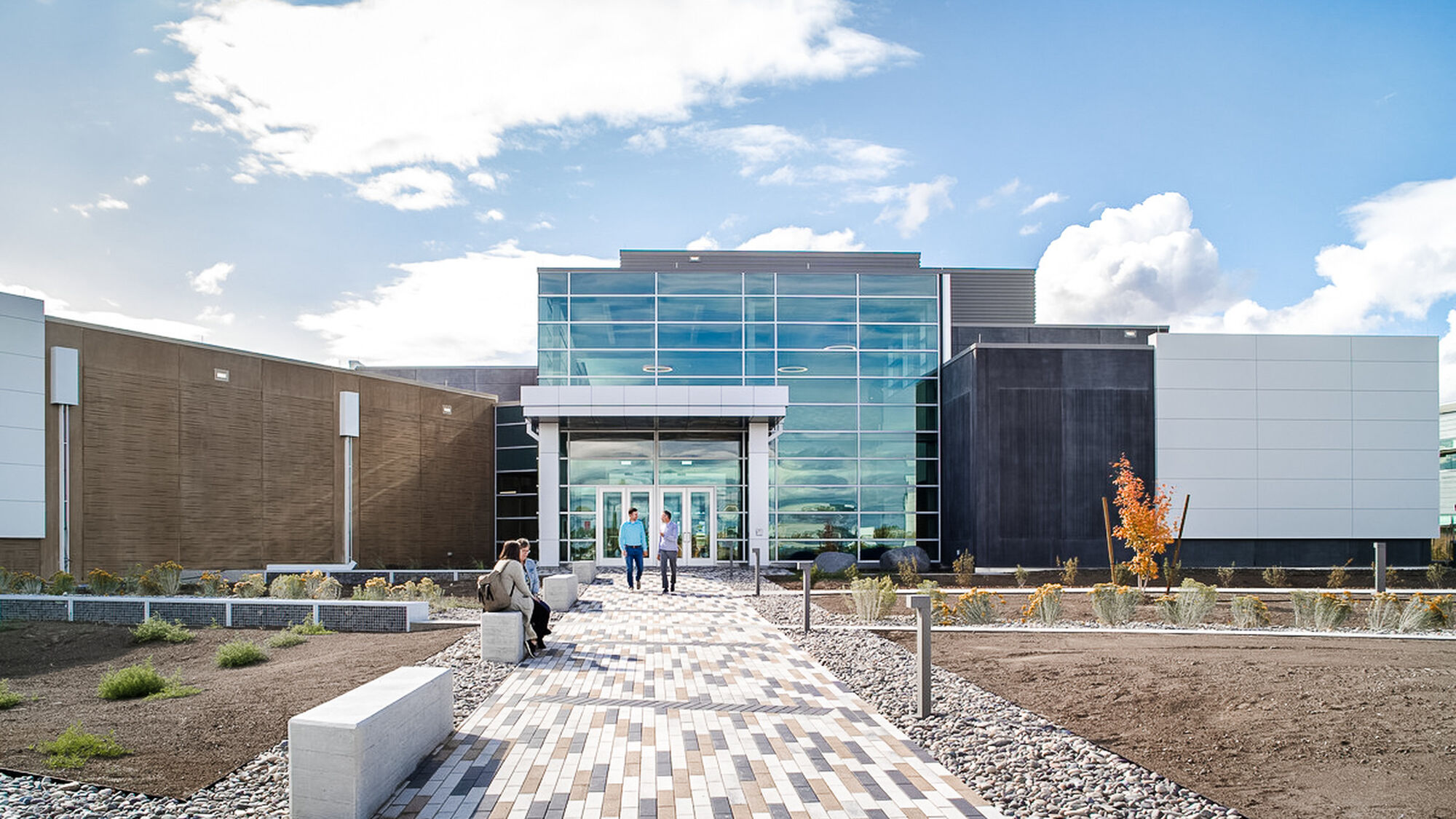
Idaho National Laboratory
Collaborative Computing Center (C3)
Advancing computational science. Leading nuclear energy research and innovation.
A cutting-edge platform dedicated to breakthrough science and innovation, Idaho National Laboratory (INL) — part of the U.S. Department of Energy — seeks to safeguard our nation's critical infrastructure and maintain homeland security through advanced nuclear energy research, development, demonstration, and deployment.
Situated in Idaho Falls — within INL's prominent Research and Education Campus (REC) — the Collaborative Computing Center (C3) creates a new home for world-class computer modeling and simulation. Reflecting a core mission of the REC and INL, C3 is designed to encourage multidisciplinary connections and collaboration among national lab researchers, Idaho university students, and industry professionals. In support of this mission, C3 provides its users with unprecedented access to INL supercomputer systems, experimental facilities, and technology — fostering exploration, discovery, and the development of new nuclear materials and applications that positively impact society.
To enable the operational functionality of INL’s High-Performance Computer (HPC) systems while supporting these vital research and development initiatives, AEI provided comprehensive services, including conceptual planning, mechanical, electrical, piping/plumbing, fire protection, technology, instrumentation and controls, sustainable design, cost estimating, and commissioning.
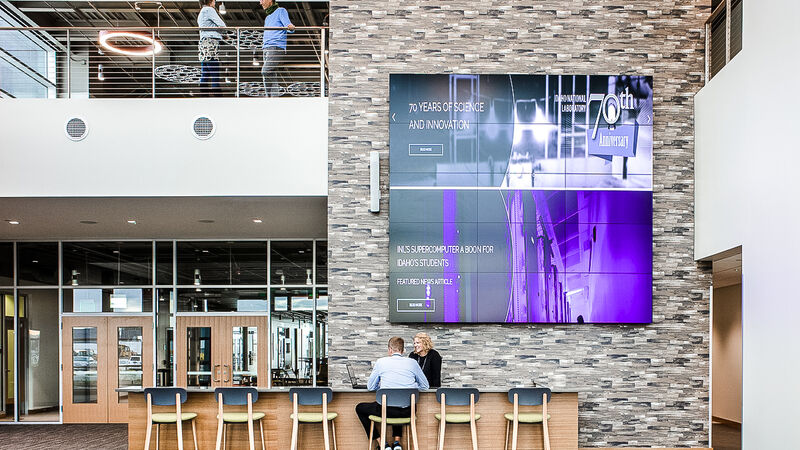
An open, light-filled entry and welcome area showcases the progressive and forward-thinking design of C3.
Addressing Critical Space Needs
Maintaining an emphasis on people and computing space, the vision for the C3 stemmed from two key issues:
- The lab’s original HPC, the Falcon, was no longer efficiently meeting the immense power needs for INL’s growing number of users.
- The existing lab facility lacked the physical space, infrastructure, and power necessary to accommodate INL’s newest, signature HPC — Sawtooth — one of the world’s fastest supercomputers.
In addition to enhanced operational capacity, expanded space was also needed to accommodate a continuous influx of users and critical research functions while providing flexibility to support future growth projections.
Enhancing Supercomputer Capacity
Spanning 73,000 square feet, the C3 creates a modern, state-of-the-art platform for advanced supercomputer operations. A large, dedicated machine floor provides ample space to house the HPC as well as future installations. Select, modern MEP infrastructure — including 1.5 MW total power — directly supports the operational functionality of the Sawtooth HPC, effectively meeting its high-intensity performance requirements and task output.
AEI’s design includes innovative cooling strategies to create the highly sensitive, temperature-controlled environments required for large-scale supercomputing equipment. N+1 redundancy provides maximum resiliency, ensuring the protection of critical data and assets during unexpected outages.
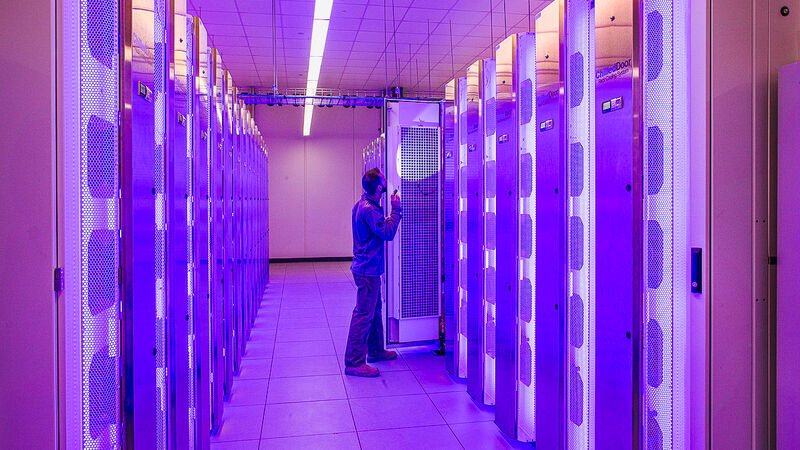
Large supercomputers are designed to support advanced modeling and simulation pertaining to nuclear energy research.
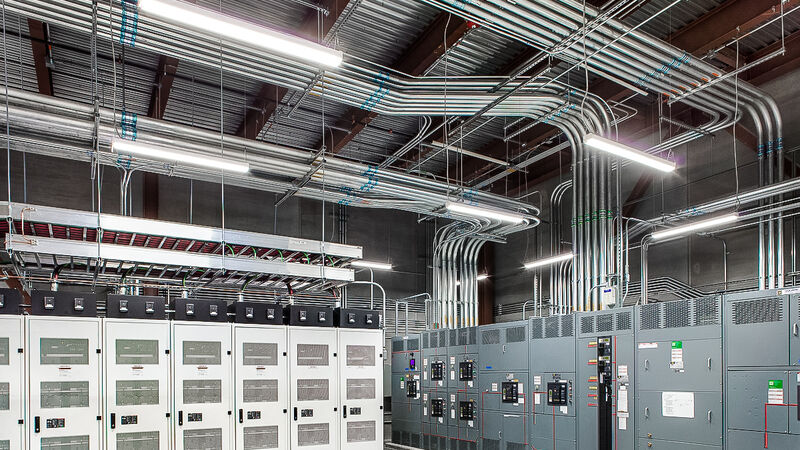
C3's advanced engineered systems supply increased power capacity — 1.5 MW — to support complex supercomputing operations.
- 100,000+
- computer cores
- 395 TB
- total memory

A dedicated machine floor houses the vital MEP infrastructure enabling operational functionality of C3's high-performance computing systems.
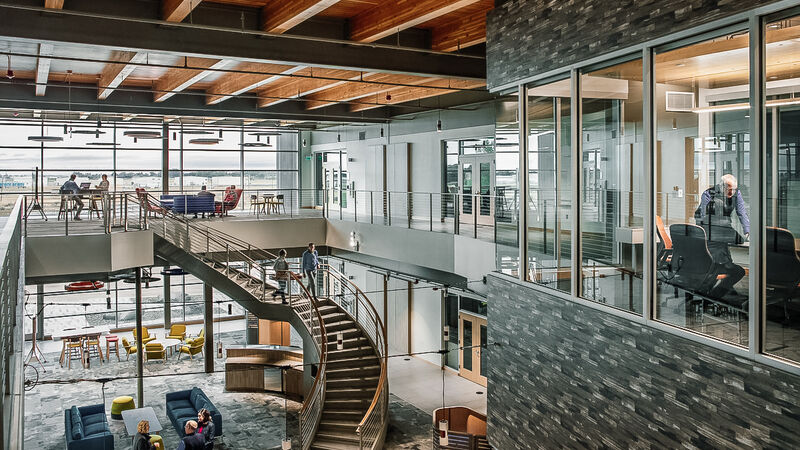
Designed to foster connection and collaboration, C3 incorporates a wide variety of diverse, flexible space types throughout the building.
Next-Generation “People” Environments
To provide INL researchers and staff with a highly functional and forward-thinking workplace environment, the space is designed to support mobility, flexibility, and connectivity. Structured cabling design — built within an accessible raised floor space — allows for easy workstation reconfiguration based on evolving research and program needs.
Supporting current and potential future partnerships with top regional and national research universities, C3 utilizes an ultra-high-speed fiber-optic network for streamlined communications and reliable connections. The network serves as a central hub connecting students, staff, and varying collaborative entities in pursuit of computational and energy research that seeks to improve our world.
“This system represents a significant increase in computing resources supporting nuclear energy research and development and will be the primary system for DOE’s nuclear energy modeling and simulation activities. It will help guide the future of nuclear energy.”

Project Leaders
-
Matt Koukl
Project Manager